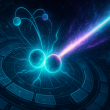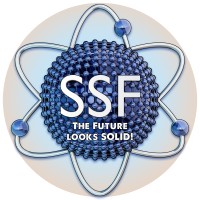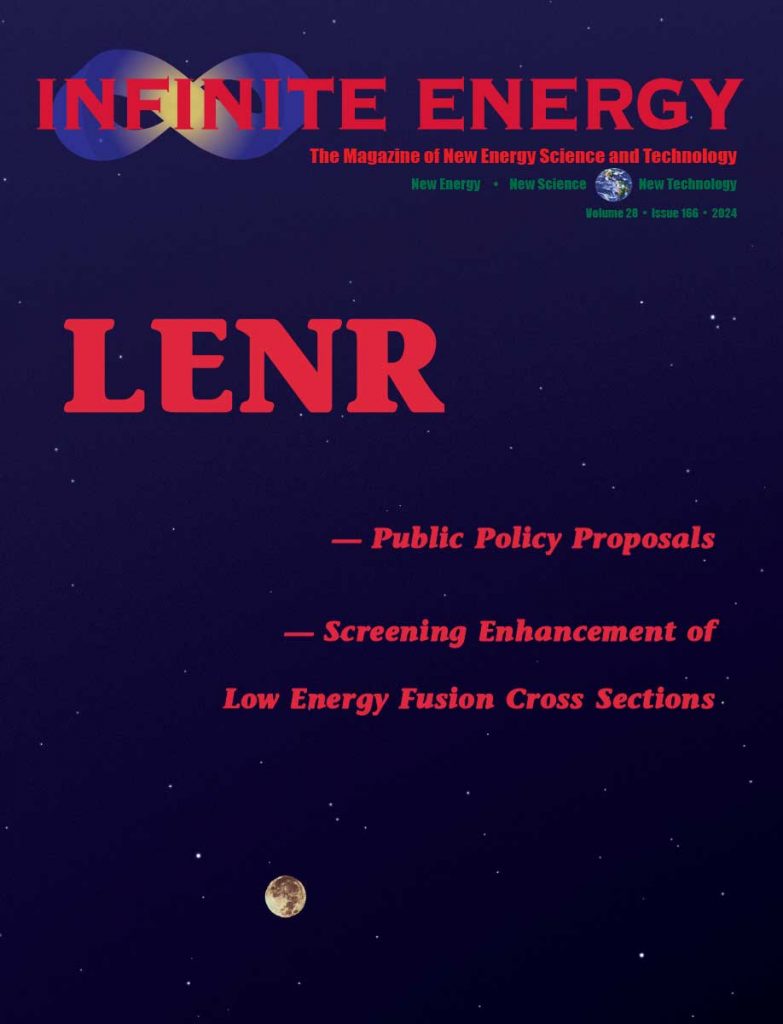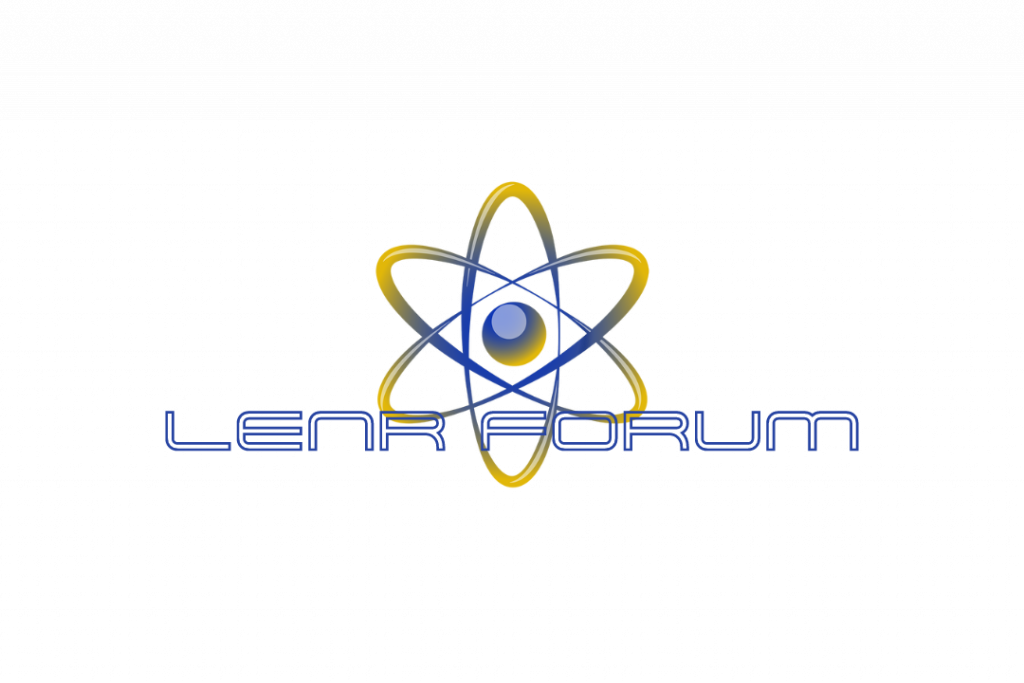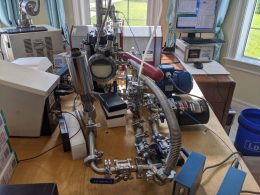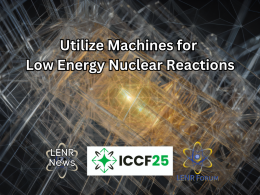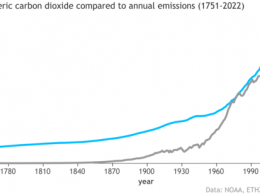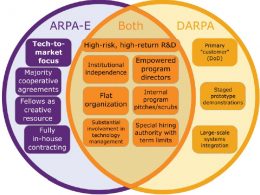A monthly round-up of the best of LENR-Forum

Your Source for Open Science and Emerging Energy Technology
LENR Community mourns the loss of Michael McKubre:
Dear Colleagues,
I am sorry with all my heart to pass on the news that Esperanza Alvarez just wrote to ask me to tell the community that Michael McKubre died yesterday afternoon of prostate cancer, which they have been fighting for a long time. I spoke to him regularly and he avidly followed the work done in the field and was encouraged by the progress.
Mike was a man who was such a key force and major contributor. He was there from the beginning and very close to Martin Fleischmann, as he was friend, colleague and supporter to so many.
I have spoken to a number of you and will more about linking the historic material publication I’m doing with the University of Utah to ongoing work and coverage many of you are doing. There is much work that shows this science and technology is and will be used. What happens is due to the contributions of so many. The future of LENR is due to standing on the shoulders of giants, and Michael McKubre was one of them.
Marianne Macy
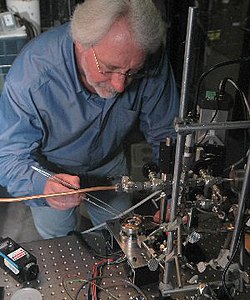
LENR Commercial News:
1.) Almost 3 years ago Max Zamilov at Maximus Energy had a 6 month run of great results with his bubble fusion set-up.
Unfortunately, the working fluid fell apart, and with it the end of his success. In this new video he takes you through the story, seeking help as he tries to replicate what made that first batch work so well:
Sonofusion Experimental Results: Fusion Breakthrough? | Max Fomitchev-Zamilov
2.) TOKYO, JAPAN — August 1, 2025 — Clean Planet Inc. (Head Office: Chiyoda-ku, Tokyo; CEO: Hideki Yoshino) is pleased to announce that Mr. Tokutaro Nakai, former Vice-Minister of the Environment, Advisor to Nippon Steel Corporation, and Representative Director of the Future Millennium Conference, has joined the company as an Advisor effective August 1, 2025.
3.) While unverified, BLP finally published their latest Pin/Pout:
“August 25: Working on peak power and duration while we record initial power measurements with a Thor Labs calibrated S322C power meter. The measurements for this power burst were:
Input 5.25 kW (DC)
Output 338 kW (DC)”
News & Updates | Brilliant Light Power
4.) Prometheus:
“At the heart of this innovation is the UM reactor, a device based on LENR (Low Energy Nuclear Reactions), a process that uses a low-energy nuclear reaction to produce electricity and hydrogen. Unlike nuclear fission, which breaks atoms generating radioactive waste, or fusion, which requires extreme temperatures and complex infrastructure, LENRs work through a much simpler and cleaner mechanism. The reactor uses water, electricity and salt to activate an impulse wave of energy that generates a plasma for a few milliseconds. This phenomenon makes it possible to produce energy without CO₂ emissions, without radioactive waste and without the risk of nuclear accidents.
The UM, developed by Prometheus, is the first device of its kind to be designed for use on a domestic scale. If the tests continue to yield positive results, in a few years it could become an affordable solution to replace gas in heating systems, power appliances, recharge electric vehicles and even provide energy to isolated communities.”
How to have cheap energy for the home without photovoltaic panels – TechPost.it
5.) ENG8 founder says they will be providing commercial energy in 2026: Co-founder Haslen Back on the Inspiration Behind the EnergiCell – YouTube
6.) Dr. Haralick claims Malcolm Bendals Thunderstorm Generator works: How Malcolm Bendall’s Thunderstorm Generator Works | Interview with Dr. Robert Haralick – YouTube
7.) Hylenr has been highly visible in the news recently:
Hylenr recognized as a “start-up-to-watch” by Inc42:
https://inc42.com/startups/30-startups-to-watch-startups-that-caught-our-eye-in-august-2025
“To solve this, clean energy engineers Siddhartha Durairajan and Ram Ramaseshan founded HYLENR in 2024. The startup is developing compact, radiation-free thermal energy reactors that help generate clean, high-density power without the risks of radioactive waste or catastrophic failure. Its reactors, based on low energy nuclear reaction (LENR), could power everything from industrial processes to space exploration, while offering a safer, more versatile approach to nuclear energy.”
-They will also have an exhibit alongside other nuclear industry companies this Nov 4-6 in Paris: Exhibitors 2025
8.) BIACO closed their website to the public a few years ago during a legal dispute, and recently reopened it. They claim their tech is “not cold fusion”, but you be the judge:
Charged – Webflow HTML website template
Papers:
1.) Let us wish CleanHME best of luck obtaining additional EU (Horizon) funding. They saw “remarkable” progress before funding ended:
Conclusions:
Thanks to the support of the European Union the CleanHME project achieved several remarkable Key Exploitable Results: Heat generation was reproducibly obtained in different laboratories. We understand the physical processes leading to the energy generation in HME systems and found special nanomaterials with high energy efficiency that could become the basis for commercial applications. The progress has been slower than planned mainly due to the COVID pandemic and the technical requirements more demanding than expected. The research concerning this new clean source of energy is pursued in several places worldwide. Therefore, in order to profit from this research effort follow-up studies should be decided and supported.
The development of the future HME sources should follow two complementary ways: fundamental research to understand the underlying physical processes and commercial technological development to improve efficiency, stability and applicability of corresponding facilities. HME energy is a breakthrough technology that has the potential to deliver low-cost energy sources of any sizes within a few years provided the research development is pursued. The time frame and the financing required to achieve TRL5 and commercial level are very modest in comparison to the probable benefits. In our societies the energy plays a key role that is constantly rising. The HME technology should be welcome to contribute to the needs of the future world.
2.) Enhanced Tritium Production in Irradiated TiD2 from
Collisional Fusion in the Solid-State
Andrew K. Gillespie a*, Cuikun Lin a, Ian Jones a, Brad Jeffries b, Joseph Caleb
Philipps c, Sandeep Puri a, John Gahl d, John Brockman c e, and R. V. Duncan
Samples irradiated in the cyclotron vault yielded a tritium production rate that was between 2.9 – 5.1 times larger than the predicted rates from simulations. The high gamma flux measured in previous experiments by Steinetz, et al. could be a significant contributing factor in observed d–D fusion events, and future experiments will explore the effects of the gamma environment on this rate. Based upon the much higher rate of tritium production when only high-energy neutrons were present, we conclude that some other mechanism may be responsible for tritium production in this case, consistent with the Steinetz, et al. hypothesis.
lenr-forum.com/attachment/28702-2508-18243v1-pdf/
3.) AI-Based Large-Area Nuclear Particle Track Analysis System
Noah D’Amico, R.V. Duncan, Sandeep Puri, Ian Jones, Cuikun Lin, A.K. Gillespie, Bo Zhao
A Region-based Convolutional Neural Network (R-CNN) model was developed for automated analysis of alpha
particle tracks. Columbia Resin 39 (CR-39) nuclear detectors were exposed to a 1-μCi Americium-241 (
241Am)
alpha particle source and subsequently analyzed through large-area Scanning Electron Microscopy (SEM) imaging over the irradiated area. The R-CNN model was trained on annotated SEM images and achieved a total
count accuracy of 95 % with a precision of 94 %, recall of 90 %, and F1-score of 92 % after preprocessing with
Canny edge detection to enhance detection accuracy and computational efficiency. The automated analysis
methods reduced analysis time by a factor of 1,000, requiring less than 10 min of user intervention. This
approach represents a significant advancement in particle track analysis efficiency and accuracy for large-scale
datasets.
AI-Based Large-Area Nuclear Particle Track Analysis System
4.) Evidence of reproducible tritium production in a pulsed light-water electrolytic cell
September 2025
Fabrizio Righes/Solitonix Srl
Reproducibility has long been the main barrier to broad scientific acceptance of low-energy nuclear reactions (LENR). A simple, repeatable experiment that produces nuclides not present in nature, such as tritium, would constitute definitive evidence of low-energy nuclear transmutation. Although tritium has been reported in earlier studies, limited reproducibility and other issues have tempered the impact of those claims. As Storms observed, tritium is the least ambiguous and most readily measured product of the cold-fusion effect[20]. Here we present a simple, low-cost experiment that reproducibly generates a mildly radioactive gas, whose tritium content has been confirmed by independent laboratories.
(PDF) Evidence of reproducible tritium production in a pulsed light-water electrolytic cell
5.) Inclusive electron scattering in the resonance region off a hydrogen target with CLAS12
V. Klimenko, D. S. Carman, R. W. Gothe, K. Joo, N. Markov, V. I. Mokeev, G. Niculescu, P. Achenbach, J. S. Alvarado et al. (CLAS Collaboration)
Inclusive electron scattering cross sections off a hydrogen target at a beam energy of 10.6 GeV have been measured with data collected from the CLAS12 spectrometer at Jefferson Laboratory. These first absolute cross sections from CLAS12 cover a wide kinematic area in invariant mass 𝑊
of the final state hadrons from the pion threshold up to 2.5 GeV for each bin in virtual photon four-momentum transfer squared 𝑄2 from 2.55 to 10.4GeV2 owing to the large scattering angle acceptance of the CLAS12 detector. Comparison of the cross sections with the resonant contributions computed from the CLAS results on the nucleon resonance electroexcitation amplitudes has demonstrated a promising opportunity to extend the information on their 𝑄2 evolution up to 10 GeV2. Together these results from CLAS and CLAS12 offer good prospects for probing the nucleon parton distributions at large fractional parton momenta 𝑥 for 𝑊<2.5GeV, while covering the range of distances where the transition from the strongly coupled to the perturbative regimes is expected.
https://journals.aps.org/prc/abstract/10.1103/qy4p-dyjt
In the Media:
1.) More on last months Nature paper from the reputable Nuclear Newswire:
University adds electrochemical boost in pursuit of cold fusion — ANS / Nuclear Newswire
2.) Heads-up, may be AI:
The Cold Fusion Saga: From Breakthrough to Banishment
EVWORLD.COM – The Cold Fusion Saga: From Breakthrough to Banishment
3.) More supportive follow-up from the recent Nature paper:
Nuclear Fusion in Palladium Metal. No, Really. | Science | AAAS
“So I have a soft spot for odd fusion mechanisms and always will. That means that this recent paper really made my day, although it is certainly not promising boundless fusion energy itself. I believe that this is an intellectual offshoot of the work that Google funded a few years back into investigating various anomalous fusion claims, but what’s being reported here is not too anomalous, although it’s quite interesting. As some will recall, the whole cold-fusion idea was driven by the hypothesis that since hydrogen (and deuterium) are taken up at high density in metals like palladium, perhaps under some conditions these nuclei could actually be induced to fuse, which would be a far different regime than exists in tokamaks or in stars.”
On YouTube:
Skeptical response to above video:
Examination of electrons
Theories on Ball Lightning by Dr. Simeon Hein to the Snippy 2025 Conference, Alamosa CO on Sunday, August 24th.
Good to Know:
1.) A reminder that LENR still has a long way to go in scientific discourse: Cold fusion – one of the most controversial ideas in science – is BACK! – YouTube
2.) Solid State Fusion tutorial: What Cold Fusion is *Not* – Solid State Fusion Discovery
3.) LENR-CANR August update: https://www.lenr-forum.com/forum/thread/7313-traffic-at-lenr-canr-is-increasing/?postID=215851#post215851
4.) Seamus reports the release of ISCMNS historical workshop records: Zenodo Archive

After much consideration, Lynn Bowen (President) and Alan Smith (CEO and Acting Treasurer) have tendered there letters of resignation for the International Society for Condensed Matter Nuclear Science. They plan to step down at the end of October 2025 when a new acting President and CEO will be nominated.
GET LINKED * CONTACT LENR-FORUM
Before it’s out, it’s at
Be a LENR News author. Submit your work to the LENR-Forum News here.
DISCLAIMER Mentions of any investment funds or private business do not indicate endorsement by the Authors or LENR-forum members. LENR-forum supports metal-hydrogen energy and solid state fusion as a zero-carbon solution to global energy needs. By publicizing community activity, we do not intend or seek to promote any one entity over any other. We do not give investment advice or suggestions. Due diligence is required before investing in any venture. Information is provided solely for educational and research purposes.

Do you have a news or article that deserves a wider distribution?
Or maybe you have a talent that complements us?
Get in touch!



